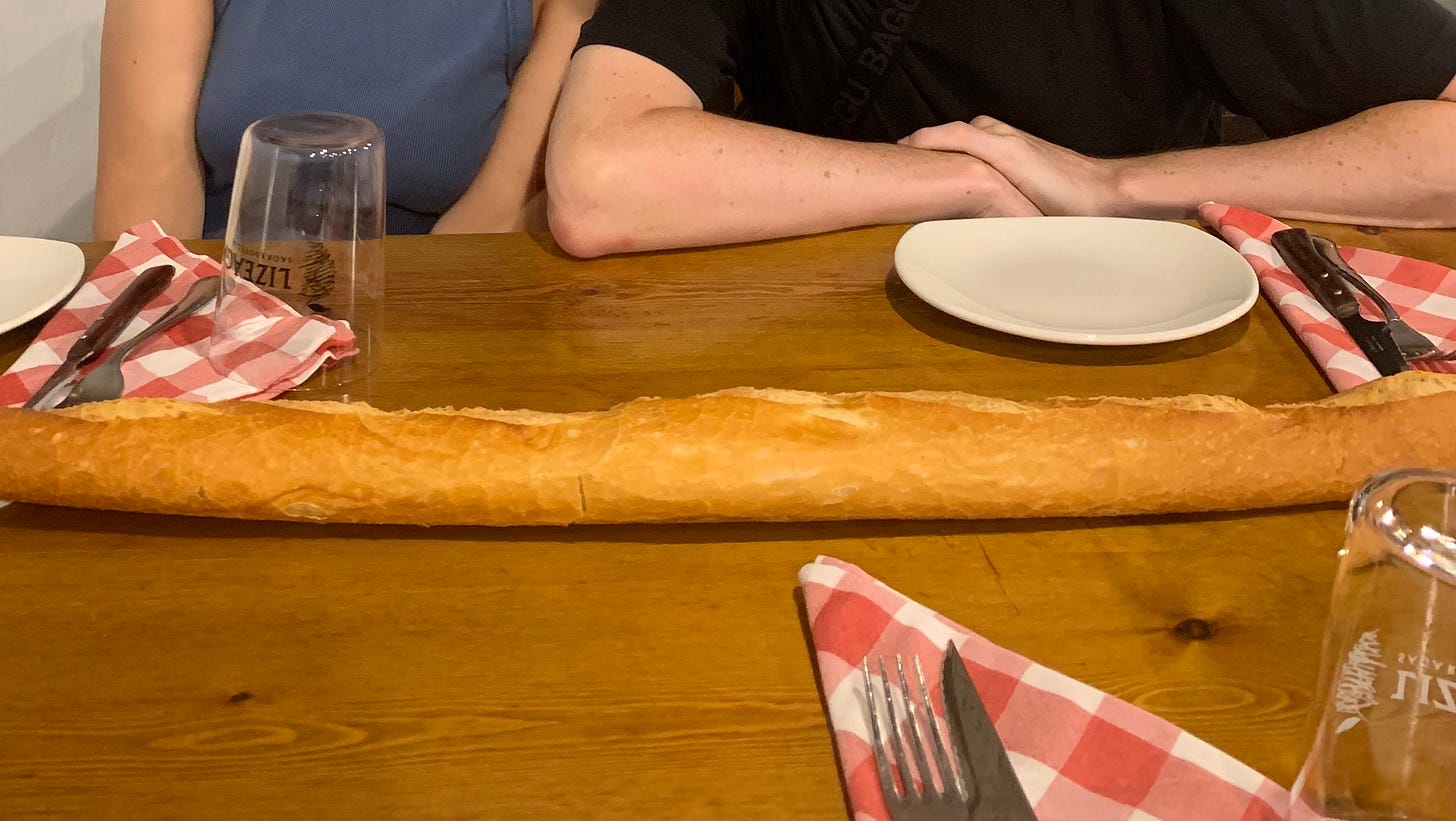There is bread waiting for you on the table. On the table. A long baguette for each party to pick up and rip with hands. We took a taxi out of Donostia to cider country, where the buildings were almost Alpine in their woodwork, white plaster with beams red or green, the colors of the flag.
It was the Karmengo Jaiak that week, the festival of the Virgen del Carmen, Nuestra Señora del Carmen de San Sebastian, patron saint of sailors and the navy and “people of the sea.” A uniquely Basque celebration, we learned. We’d seen the signs: Tourist, remember. You are neither in Spain nor in France, you are in the Basque Country. Jende zoriontsua herri libre batean. And the flag, red, white, green, everywhere, with the flag of Palestine flying along with it.
The cidery was in one of these chalet-type buildings, stone this time, next to an overpass and a bus stop, apple trees reaching up the hill. The restaurant was an old house, we’d seen the models. We’d gone to the cider museum just before. Stone with beams running along the ceiling. They would lift the apples up to the top floor with a bucket on a pulley and crush them and press them with a stone wheel attached to an ox on the floor below, walking, walking, circles, apples. The floor upstairs was sloped, the wood sealed, the juice flowing from the turning wheel toward a hole in the corner through which it would pour frothily into a waiting barrel below. All in the main house, cramped, sleep, eat, live among the apples and oxen. A few months and some native yeast later and it’s cider, cider in a huge, huge barrel, turned on its side. Our guide at the museum, Inza, had told us about a tradition called txotx, when the barrel is on its side and there is then poked a small hole immediately plugged with a stick. Unwieldy. Cooperation needed.
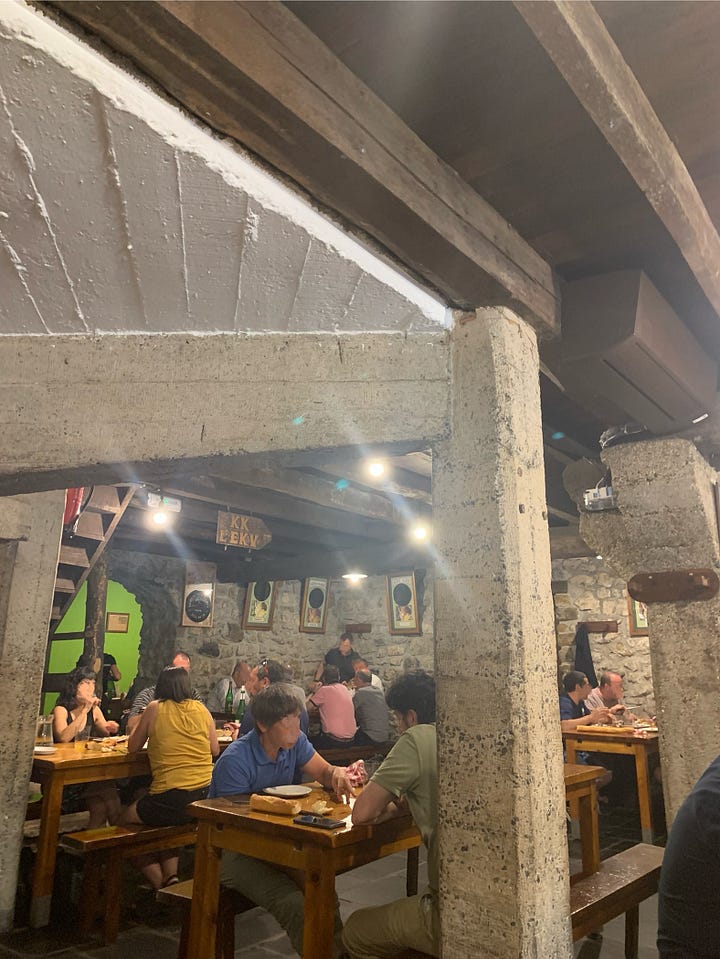
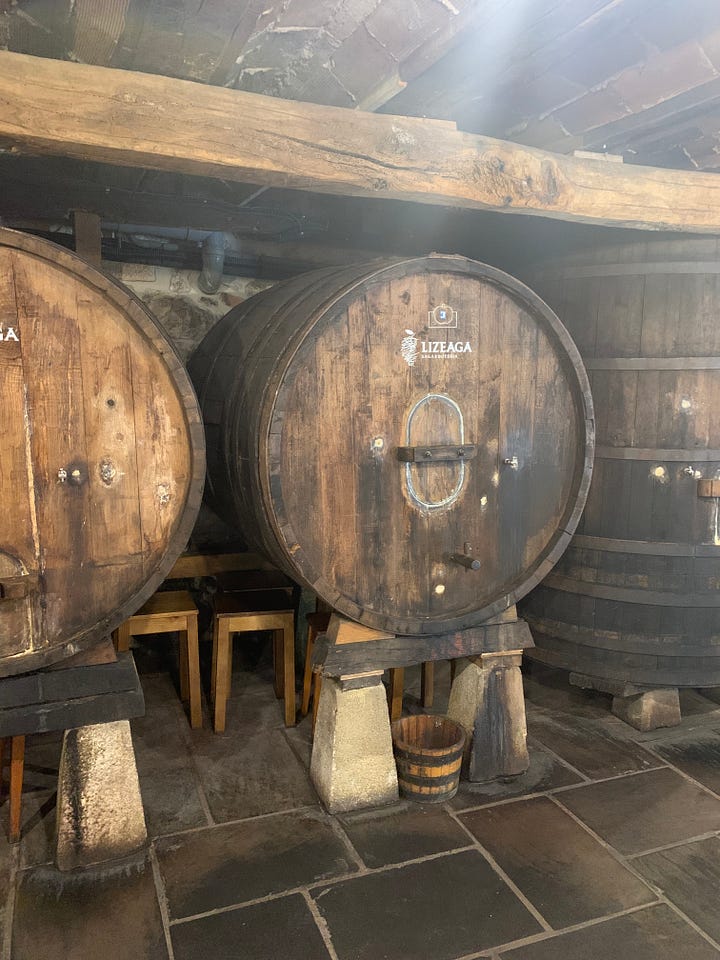
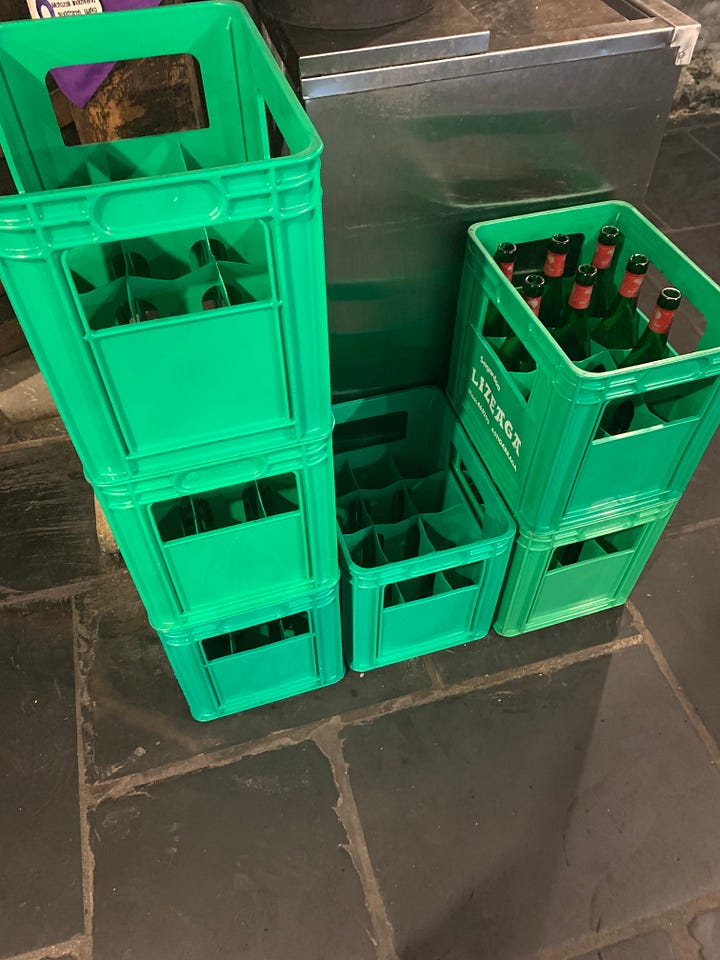

And during the peak cider season the txotxero, the most crucial job, will every so often pull out the stick and yell. And a stream of cider will arc out like a fountain in Rome, shooting through the room, aerating (the best for cider so fresh) and at the sound of TXOTX! the people leap up and line up with cups in hand and walk toward the barrel, catching its arcing cider by dragging their cup at an angle through the stream—one, two, three counts—before turning away, the next person at attention right behind, and a bucket placed exactly where the arcing cider hits the floor in case there is a lapse of attention. “Drink a little bit at a time, and often,” Inza had said. When we came to Lizeaga it was no longer the season for txotx, the cider is bottled by May, but even in July the dining room was full, and in the absence of txotx you aerate your own cider by pouring from on high through a special cork that makes the stream narrower, bringing it more under your control. We poured and raised our bottles up and down and when they were empty, another would appear as though conjured by our little ritual.
On the walls: an award, a key, a group portrait, a press clipping, a saw.
For cider: tomatoes, sliced, big and full of pockets, pinky lavender. Garlic everywhere. Olive oil, salt. Salt! The Basques know how to use their salt. Just on the edge of too salty. But then it pulls back. It makes a point. Not quite tomato season, but perfect. Cod with fried peppers and caramelized onions, the fish toothy, firm but gelled, the peppers oily, golden. Then—oh—the txuleta, oh—a huge ribeye, sliced, swimming in its juices. We had learned earlier about something the Basques love especially in their food. Resistance on the outside, softness on the inside. The txuleta, browned salted scorched crusted, but rare, very rare, so purple in its bloody jiggliness, and to gnaw off the bone is the only choice. And each time the cider was through, another bottle, another bottle, another would appear. Funky, light but firm, drinkable but present, just a little bitter, a little sour, fresh, an apple, an apple.
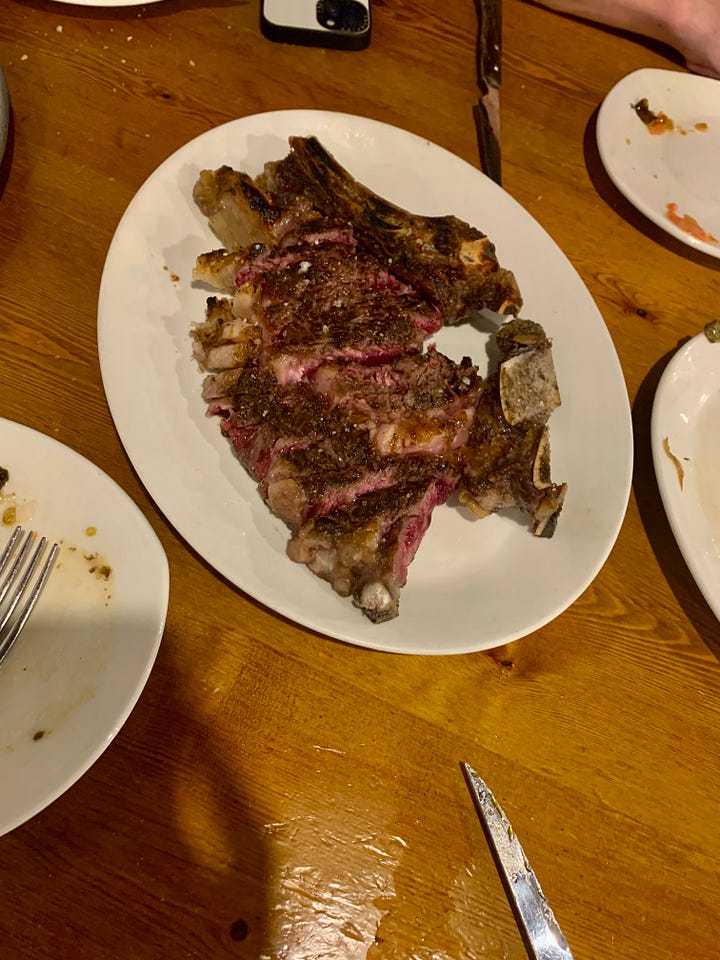
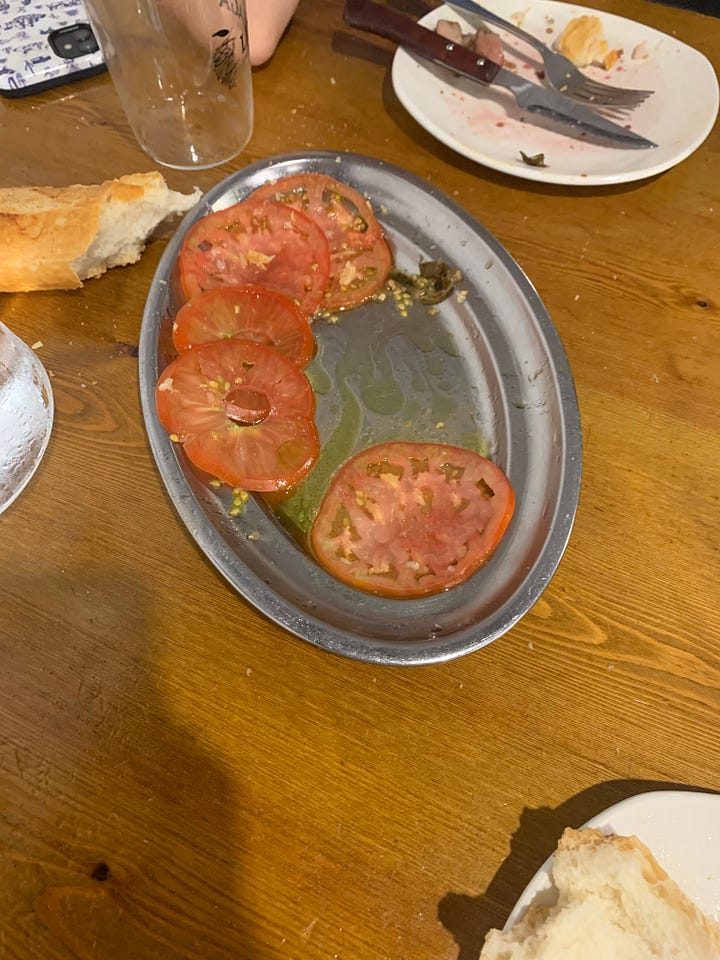
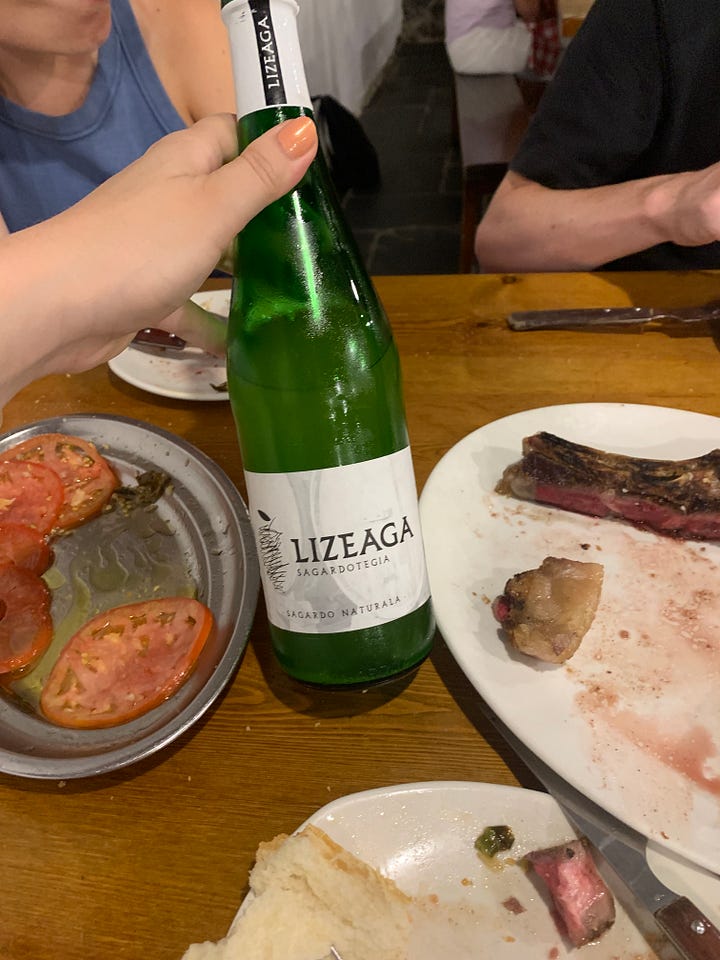
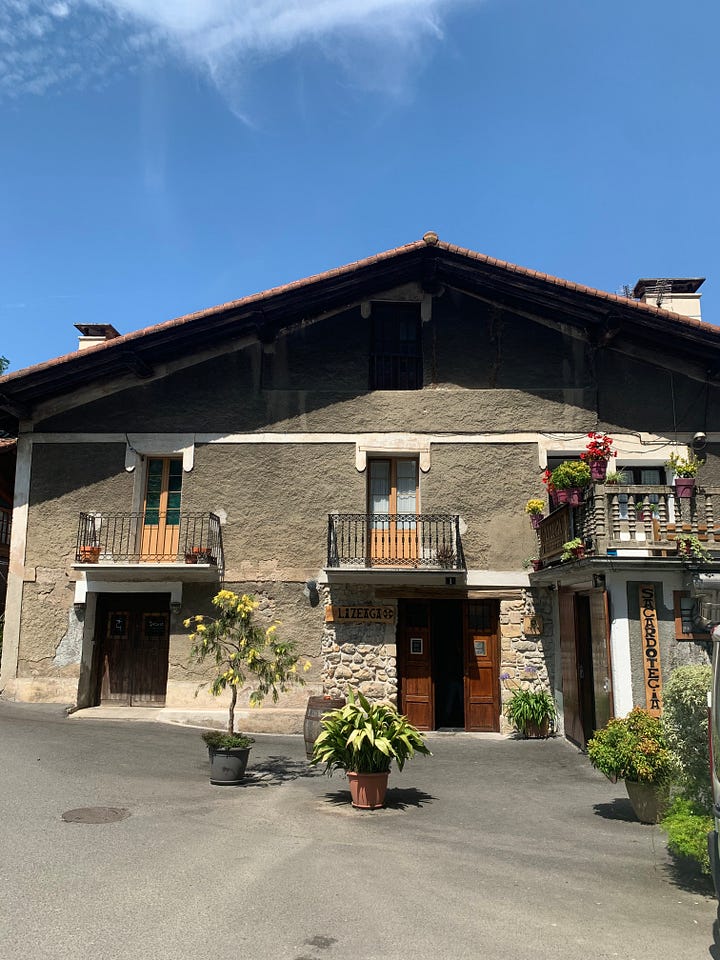
would order again: whatever they recommend




